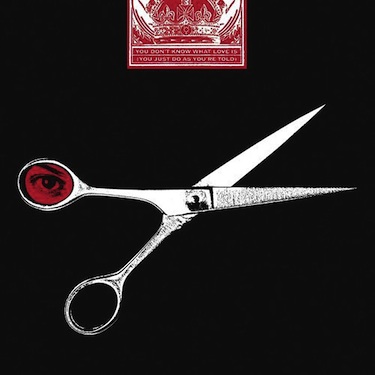|
 You Don't Know What Love Is (You Just Do As You're Told) by The White Stripes You Don't Know What Love Is (You Just Do As You're Told) by The White Stripes
NEW YORK, NEW YORK: Philip J. Harvey from PilotLight Audio Inc. was hired by the White Stripes to mix front-of-house sound and multi-track record their tenth anniversary tour of 2007 in forty channels of high-resolution digital audio. Harvey put together a Metric Halo rig consisting of five MIO 2882+DSP interfaces passing 24-bit/96kHz audio into his MacBook Pro laptop computer. This endeavor led to the recording and mixing of two songs that were released as B-sides on the White Stripes’ “You Don't Know What Love Is” EP.
“We ended up with 36 channels, including two audience mics,” he says. “I also recorded a four-channel pre-mix with a separate MIO 2882+DSP unit, utilizing the FOH board mix left/right, plus a pair of Schoeps CMC6MK4 mics in an ORTF stereo configuration at FOH also. I would delay the board mix using the Delay Finder in Metric Halo’s SpectraFoo analysis software to get the time synched to the mics and record those tracks separately, as well as mixed together at 16-bit/44.1kHz, for an easily accessed overview of the gig. If the band wanted a CD right away, I could burn one or transfer the track to a thumb drive.”
It may be hard to believe that the two members of the White Stripes require four-dozen tracks when mixing and recording their live show, but Harvey details the stage setup. “Drums and a few percussion things take about twelve channels,” he says. “Then there are three guitar amps and many different stations onstage that Jack utilizes. He’ll jump on an effected vocal mic that has some strange harmonizer and lots of reverb by the drum set. To the left of the center vocal position he has a Moog station with a monophonic synthesizer. On stage right is a keyboard station with a Wurlitzer electric piano and Hammond C-3 organ, with Leslie, and another vocal mic. Not to mention the vocal mic behind the guitar amps so that when he runs upstairs he can take it with him onto the walkway.”
Harvey is not aware of any current release plans for the multi-tracked material. “The White Stripes wanted to have every show multi-track recorded and archived. Whenever they decide to put out a live concert CD or DVD they can preview the shows with the four-tracked pre-mixes, as a reference to the multi-tracks, and pick the performances they like and want to mix. There is plenty of quality material to work with,” he says. “The results were outstanding.”
“It was quite interesting how the B-side recordings came into fruition,” Harvey reveals. “The White Stripes’ 2007 tour schedule was very busy and Warner Brothers needed to release the second single from their “Icky Thump” album. The band wanted to package the “You Don’t Know What Love Is” single with new acoustic material that could only be heard on that EP, so we recorded it while on tour in Canada.” He continues, “After soundcheck in St. Johns, Nova Scotia, I found myself with Jack and Meg on the top floor of a little square announcer’s tower located in the middle of a horse race track, which was behind the hockey arena the Stripes were performing in that night. The announcer’s tower had three floors and was all wood construction, the only non-concrete place we could find in the area!” Armed with one Metric Halo ULN2+DSP and a MIO 2882+DSP, an assortment of mics, stands and cables, three acoustic songs were recorded in less than two hours. Harvey recalls, “It was so hot in the tower that we had to open the windows between takes, but the wind would cause the mic diaphragm’s to rumble, so we had to sweat while recording.” Two of those recordings made it to the EP. Harvey states, “If you listen to “A Martyr for My Love for You (Acoustic Version),” all the ambience is recorded live in the room, there was no artificial reverbs added to the mix, thanks to the ULN2 and Schoeps combination!”
Philip Harvey’s experience with Metric Halo equipment dates back to the product’s original launch in 2001, when he was working with jazz trio Medeski Martin & Wood. “Metric Halo founders, Joe and B.J. Buchalter, were fans of the band,” Harvey remembers, “I was an early adopter of MH’s hardware. I developed a relationship with Joe and B.J. by calling and bugging them so much that they said, “here why don’t you take these MIO units, bash them around and tell us what needs to be fixed.” I was very excited to take part in MH research and development! At that time we were recording 32 channels of 24-bit/48kHz with four MIO 2882+DSP units into my 400 MHz G3 PowerBook.” All recordings were captured to FireWire hard drives, “During the eight years I worked with MMW, we recorded roughly two years of shows from their tours.”
“The Metric Halo stuff always works. I have such huge respect for those guys. They’re a small company of seven people competing with huge companies like Digidesign and MOTU with armies of programmers, and the MH hardware/software always sounds better!” The Metric Halo rig is now touring internationally with another Jack White project, The Raconteurs, with Harvey at front-of-house once again, but this time it’s a rig consisting of five custom units. The tour started in mid-April, with promotional shows in small clubs, then immediately escalated into larger venues and appearances at the top festivals in the US and abroad, including Coachella, Bonnaroo, Lollapalooza and Glastonbury. |